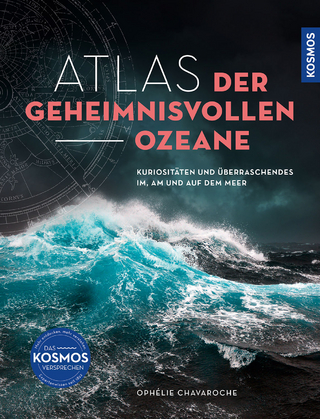
Water Resources Engineering
John Wiley & Sons Inc (Verlag)
978-1-119-49057-9 (ISBN)
- Titel z.Zt. nicht lieferbar
- Versandkostenfrei innerhalb Deutschlands
- Auch auf Rechnung
- Verfügbarkeit in der Filiale vor Ort prüfen
- Artikel merken
The discussion focuses on the engineering aspects of water supply and water excess management, relating water use and the hydrological cycle to fundamental concepts of fluid mechanics, energy, and other physical concepts, while emphasizing the use of up-to-date analytical tools and methods. Now in its Third Edition, this straightforward text includes new links to additional resources that help students develop a deeper, more intuitive grasp of the material, while the depth and breadth of coverage retains a level of rigor suitable for use as a reference among practicing engineers.
Larry W. Mays is Professor of Civil and Environmental Engineering at Arizona State University and former chair of the department. He was formerly Director of the Center for Research in Water Resources at The University of Texas at Austin, where he also held an Engineering Foundation Endowed Professorship. A registered professional engineer in seven states and a registered professional hydrologist, he has served as a consultant to many organizations. He was the editor-in-chief of Reliability Analysis of Water Distribution Systems (ASCE) and co-editor of Computer Modeling of Free Surface and Pressurized Flows. Among his honors include a distinguished alumnus award from the University of Illinois at Urbana-Champaign in 1999.
About the Author iii
Acknowledgments v
Preface vi
Chapter 1 Introduction 1
1.1 Background 1
1.2 The World’s Freshwater Resources 10
1.3 Water Use in the United States 14
1.4 Systems of Units 16
1.5 The Future of Water Resources 18
1.6 Water–Energy Nexus 19
Chapter 2 Water Resources Sustainability 25
2.1 What is Water Resources Sustainability? 25
2.2 Challenges to Water Resources Sustainability 28
2.3 Surface Water System—The Colorado River Basin 48
2.4 Groundwater Systems—The Edwards Aquifer, Texas 53
2.5 Water Budgets 57
2.6 Examples of Water Resources Unsustainability 63
Chapter 3 Hydraulic Processes: Flow and Hydrostatic Forces 73
3.1 Principles 73
3.2 Control Volume Approach for Hydrosystems 80
3.3 Continuity 82
3.4 Energy 84
3.5 Momentum 88
3.6 Pressure and Pressure Forces in Static Fluids 89
3.7 Velocity Distribution 94
Chapter 4 Hydraulic Processes: Pressurized Pipe Flow 99
4.1 Classification of Flow 99
4.2 Pressurized (Pipe) Flow 102
4.3 Headlosses 106
4.4 Forces in Pipe Flow 116
4.5 Pipe Flow in Simple Networks 119
Chapter 5 Hydraulic Processes: Open-Channel Flow 127
5.1 Steady Uniform Flow 127
5.2 Specific Energy, Momentum, and Specific Force 138
5.3 Steady, Gradually Varied Flow 148
5.4 Gradually Varied Flow for Natural Channels 155
5.5 Rapidly Varied Flow 166
5.6 Discharge Measurement 172
Chapter 6 Hydraulic Processes: Groundwater Flow 183
6.1 Groundwater Concepts 183
6.2 Saturated Flow 191
6.3 Steady-State One-Dimensional Flow 196
6.4 Steady-State Well Hydraulics 199
6.5 Transient Well Hydraulics—Confined Conditions 205
6.6 Transient Well Hydraulics—Unconfined Conditions 215
6.7 Transient Well Hydraulics—Leaky Aquifer Conditions 216
6.8 Boundary Effects: Image Well Theory 217
6.9 Simulation of Groundwater Systems 225
Chapter 7 Hydrologic Processes 233
7.1 Introduction to Hydrology 233
7.2 Precipitation (Rainfall) 243
7.3 Evaporation 269
7.4 Infiltration 277
Chapter 8 Surface Runoff 291
8.1 Drainage Basins and Storm Hydrographs 291
8.2 Hydrologic Losses, Rainfall Excess, and Hydrograph Components 295
8.3 Rainfall-Runoff Analysis Using Unit Hydrograph Approach 299
8.4 Synthetic Unit Hydrographs 302
8.5 S-Hydrographs 307
8.6 NRCS (SCS) Rainfall-Runoff Relation 309
8.7 Curve Number Estimation and Abstractions 311
8.8 NRCS (SCS) Unit Hydrograph Procedure 318
8.9 Kinematic-Wave Overland Flow Runoff Model 322
8.10 Computer Models for Rainfall-Runoff Analysis 328
Chapter 9 Reservoir and Stream Flow Routing 333
9.1 Routing 333
9.2 Hydrologic Reservoir Routing 334
9.3 Hydrologic River Routing 338
9.4 Hydraulic (Distributed) Routing 342
9.5 Kinematic Wave Model for Channels 348
9.6 Muskingum–Cunge Model 353
9.7 Implicit Dynamic Wave Model 354
Chapter 10 Probability, Risk, and Uncertainty Analysis for Hydrologic and Hydraulic Design 361
10.1 Probability Concepts 361
10.2 Commonly Used Probability Distributions 364
10.3 Hydrologic Design for Water Excess Management 367
10.4 Hydrologic Frequency Analysis 373
10.5 U.S. Water Resources Council Guidelines for Flood Flow Frequency Analysis 379
10.6 Analysis of Uncertainties 384
10.7 Risk Analysis: Composite Hydrologic and Hydraulic Risk 387
10.8 Computer Models for Flood flow Frequency Analysis 393
Chapter 11 Water Distribution 397
11.1 Introduction 397
11.2 System Components 409
11.3 System Configuration and Operation 426
11.4 Hydraulics of Simple Networks 429
11.5 Pump Systems Analysis 433
11.6 Network Simulation 448
11.7 Modeling Water Distribution Systems 459
11.8 Hydraulic Transients 461
Chapter 12 Storm water Control: Storm Sewers and Detention 481
12.1 Storm water Management 481
12.2 Storm Sewer Systems 482
12.3 Storm water Drainage Channels 509
12.4 Storm water Detention 517
Chapter 13 Storm water Control: Street and Highway Drainage and Culverts 541
13.1 Drainage of Street and Highway Pavements 541
13.2 Hydraulic Design of Culverts 563
Chapter 14 Design of Spillways and Energy Dissipation for Flood Control Storage and Conveyance Systems 581
14.1 Hydrologic Considerations 581
14.2 Dams 582
14.3 Spillways 593
14.4 Hydraulic-Jump-Type Stilling Basins and Energy Dissipators 616
Chapter 15 Sedimentation and Erosion Hydraulics 637
15.0 Introduction 637
15.1 Properties of Sediment 639
15.2 Bed Forms and Flow Resistance 647
15.3 Sediment Transport 652
15.4 Bed Load Formulas 658
15.5 Suspended Load 663
15.6 Total Sediment Load (Bed Material Load Formulas) 666
15.7 Bridge Scour 674
Supplemental Chapter 15 section 15.8 (Watershed sediment Yield), 15.9 (Reservoir Sedimentation) and 15.10 (Stream Stability at Highway Structures) are available to Instructors for Distribution 15-1
Chapter 16 Water Resources Management for Sustainability 679
16.1 Integrated Water Resources Management for Sustainability 679
16.2 Water Law: Surface and Groundwater Management Aspects 682
16.3 Sustainable Water Supply Methodologies for Arid and Semi-Arid Regions 688
16.4 Water Resources Economics 701
16.5 Water Resource Systems Analysis 708
16.6 Life Cycle Assessment (LCA) 714
16.7 Water-Wise Cities in the Future 717
Chapter 17 Water Withdrawals and Uses (Supplemental Chapter Available to Instructors for Distribution) 17-1
Chapter 18 Water for Hydroelectric Generation (Supplemental Chapter Available to Instructors for Distribution) 18-1
Chapter 19 Flood Control (Supplemental Chapter Available to Instructors for Distribution) 19-1
Appendix A Newton–Raphson Method 723
Index 727
| Erscheinungsdatum | 25.02.2019 |
|---|---|
| Verlagsort | New York |
| Sprache | englisch |
| Maße | 203 x 252 mm |
| Gewicht | 1293 g |
| Themenwelt | Naturwissenschaften ► Geowissenschaften ► Hydrologie / Ozeanografie |
| Technik ► Bauwesen | |
| Technik ► Maschinenbau | |
| ISBN-10 | 1-119-49057-X / 111949057X |
| ISBN-13 | 978-1-119-49057-9 / 9781119490579 |
| Zustand | Neuware |
| Haben Sie eine Frage zum Produkt? |
aus dem Bereich


